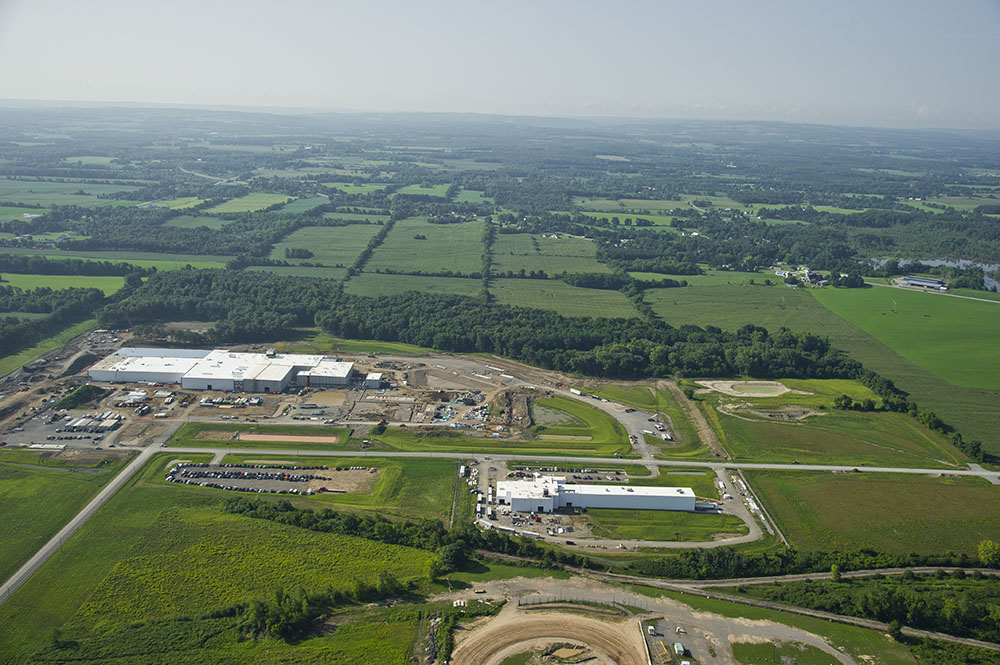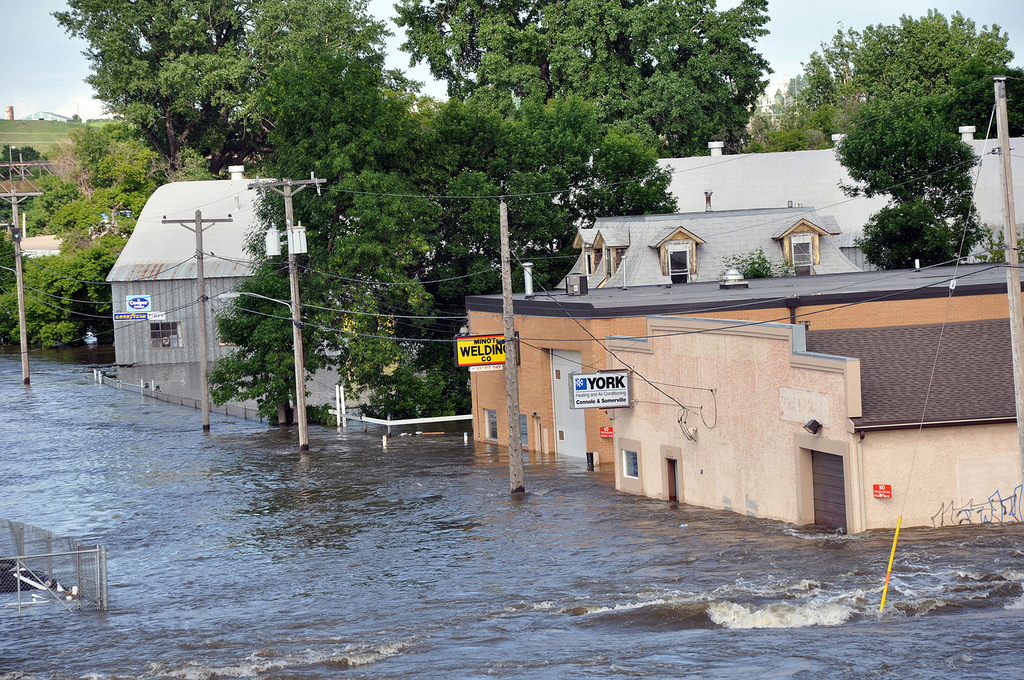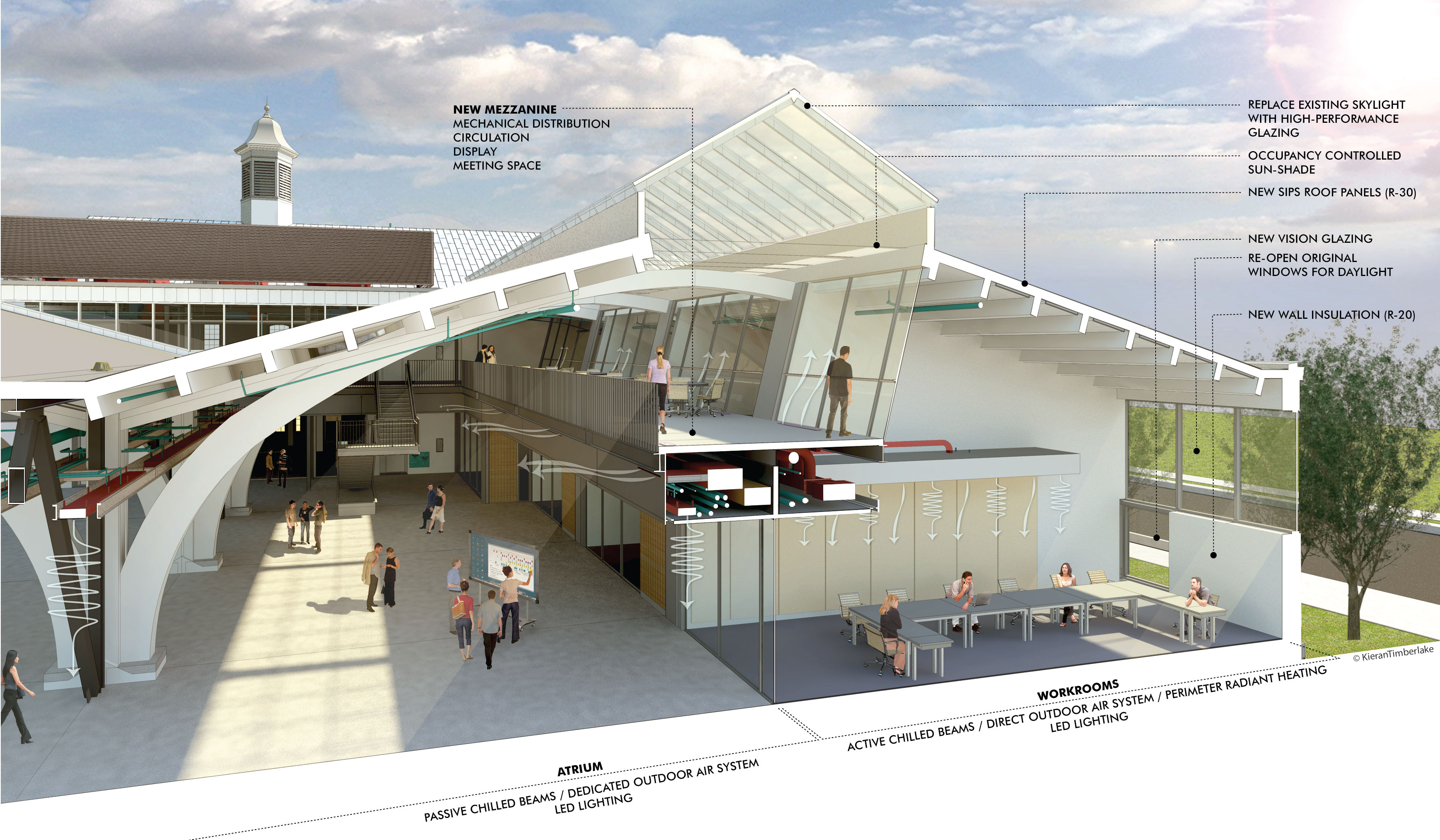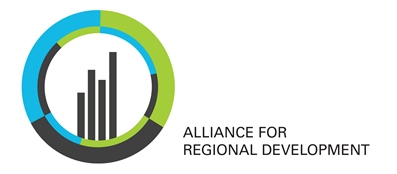
JUNE 2013
|
The mission of the Economic Development Administration (EDA) is to lead the federal economic development agenda by promoting innovation and competitiveness, preparing American regions for growth and success in the worldwide economy. The agency has a competitive grant process and has established the following investment priorities as criteria: collaborative regional innovation, public/private partnerships, national strategic priorities, global competitiveness, environmentally sustainable development, and economically distressed and underserved communities.
Message from Deputy Assistant Secretary
|
 |
|
Dr. Michael Porter, |
Michael E. Porter is the Bishop William Lawrence University Professor at Harvard Business School. He is a leading authority on competitive strategy, the competitiveness and economic development of nations and regions, and strategic approaches to social problems such as health care and corporate responsibility. In 2001, Harvard Business School and Harvard University jointly created the Institute for Strategy and Competitiveness, dedicated to furthering Professor Porter’s work.
Dr. Porter recently answered some questions about the importance of clusters to U.S. economic competitiveness and the benefits that recent federal initiatives in promoting clusters will bring to the U.S. economy.
Question: Clusters are an increasing focus of both local and federal economic development initiatives. Why are these economic networks critical to increasing America’s global competitiveness?
A: The fundamental goal of economic policy is to enhance competitiveness, which is reflected in the productivity of a region in producing goods and services. High and rising productivity allows firms in a region to compete in national and international markets while improving wages and the standard of living of the average citizen. Clusters are crucial drivers of regional productivity. Firms that are located within a cluster can access specialized inputs more efficiently, transact more efficiently, share technologies and knowledge more readily, start new businesses more easily, and innovate more rapidly. Clusters also foster the development of specialized infrastructure and initiatives such as training programs to meet a cluster’s particular workforce needs.
Globalization has made clusters more, not less, important. Falling barriers to trade and investment have exposed previously protected industries to competition, allowing strong clusters to grow stronger and leading weaker locations to lose position. Globalization neutralizes many sources of competitive advantage that can be accessed from a distance, such as cheap labor, raw materials, or generic technology. Paradoxically, this means that the local advantages of clusters are more important to American regions in global competition. Firms located in strong clusters enjoy advantages based on proximity that are difficult for outsiders to tap. The U.S. Competitiveness Project at Harvard Business School has found that cluster development is an essential tool for leaders to strengthen the U.S. economy in a global marketplace.
What Is a “Cluster”?According to the U.S. Cluster Mapping website, a cluster “is a geographic concentration of interconnected companies, specialized suppliers, service providers, and associated institutions in a particular field that is present in a nation or region. Clusters arise because they increase the productivity with which companies can compete.” |
Q: The Obama Administration has taken significant steps and made key investments to support and strengthen industry clusters through initiatives such as the Jobs and Innovation Accelerator Challenge. What benefit do you think such federal action has on supporting economic development?
A: Well-designed federal policies to support cluster development can have powerful benefits for regional economic development. Recent studies confirm that strong clusters have a substantial positive effect on wages, job growth, innovation, and new business formation in a region. Cluster-based policy aims to foster the positive externalities and spillovers that occur within clusters, encourage private sector collaboration to improve the business environment, and make existing economic development programs far more effective by tying them to the needs of groups of local businesses. Federal policies and programs based on cluster principles reinforce the natural economic specialization across states and regions, which increases productivity and productivity growth. This fosters positive-sum competition across states and regions, where all areas can benefit from increasing productivity. Traditional economic policies often retard specialization by distorting markets through subsidies and awarding public resources based on political rather than economic consideration. When federal, state, and local economic development efforts are based on cluster concepts, federal policies are more effective because they are better connected to the realities of state and local economies. Indeed, federal leadership in cluster-based policy encourages cluster-based approaches at the state and local level.
Q: Through the collaborative effort of the U.S. Department of Commerce’s Economic Development Administration and Harvard, new tools, data, metrics, and case studies related to clusters are being developed and disseminated. What value do you think that the tool affords to support both micro and macroeconomic development decision making?
A: There is a growing demand for detailed data on economic geography, including comparative benchmarks across regions to enable governments and other organizations to better understand regional strengths and weaknesses in order to develop and implement more effective regional development strategies. The new U.S. Cluster Mapping website provides practitioners, policy makers, and researchers with powerful data and tools to understand the economic composition of regions, explain differences in regional performance, better align regional priorities with the needs of the economy, and identify appropriate partner organizations across the country. The new data, tools, guides, and directories will help to strengthen U.S. competitiveness by providing U.S. and regional leaders with new information to help make better economic development decisions.
In order to help regions identify their areas of specialization, we have updated cluster definitions using rigorous methods to reflect new and emerging industries and shifting locational patterns. Then, consistent definitions of clusters are applied across the entire United States to allow clusters to be mapped by region. Regions can then easily compare themselves to one another. The site also provides reports and studies on individual clusters and cluster initiatives to provide policymakers and practitioners with concrete examples of what works. Finally, to facilitate information sharing—on areas such as cluster initiatives, technology parks, and regional economic development agencies—local organizations can register themselves in an open, searchable database.
PROFILE
U.S. Cluster Mapping Tool: A Powerful New Economic Development Resource

The U.S. Cluster Mapping website is a first-of-its-kind interactive portal created by the Institute for Strategy and Competitiveness at Harvard Business School in partnership with EDA. It offers a unique set of tools that can help businesses, policymakers, and researchers better understand the dynamics of clusters and put that knowledge to work in economic development. These include:
- visual data and statistical tools to assess regional clusters and the characteristics of business environment;
- a resource library of research to formulate economic development strategies; and
- a directory that allows users to profile cluster organizations and initiatives throughout the country.
In addition, “Data QuickStarts” provides examples that introduce users to the breadth of data available and provide key analyses for better understanding clusters, the cluster composition of regions, and their overall performance.
By registering, users can save and later retrieve the data and cluster research they’ve conducted. An online member directory enhances the utility of the site, providing the basis for establishment of a virtual community that allows cluster initiatives from around the country to interact, showcase their activities, and promote their events.
The U.S. Cluster Mapping website is currently in Alpha form, and user feedback is encouraged via a link on the website’s homepage.
SPOTLIGHT
June 13 Deadline to Apply for Investing in Manufacturing Communities Partnership Implementation Strategy Grants
The Obama Administration is accepting applications for the first phase of the new Investing in Manufacturing Communities Partnership (IMCP).
The IMCP is an initiative that will help accelerate the resurgence of manufacturing and create jobs across the country. It is designed to reward communities that demonstrate best practices in attracting and expanding manufacturing by leveraging and integrating targeted investments in workforce training, critical infrastructure, research, and other key assets.
In the first phase of the IMCP in 2013, the Economic Development Administration (EDA), Department of Agriculture, Small Business Administration, and Environmental Protection Agency are each providing funding for regional, implementation-ready strategy grants to kick-start the initiative.
EDA will allocate up to $4 million to support the development of approximately 20 to 25 regional implementation-ready strategies. EDA funds, up to $200,000 per grant, will be made available through EDA’s Economic Adjustment Assistance program. For more information, go EDA’s IMCP web page. The deadline to submit an application is June 13. The announcement of the grant award winners is scheduled for September.
The second phase of IMCP is the IMCP Challenge, a multi-agency implementation grant competition led by EDA that represents the cornerstone of the overall IMCP. President Obama’s FY 2014 budget includes $113 million for this component. Stay tuned for more information to come this fall.
Brookings: Regional Approach the Right One for Advancing U.S. ManufacturingReacting to President Obama’s recent announcement of policies designed to strengthen manufacturing, including the National Network for Manufacturing Innovation and the Investing in Manufacturing Communities Partnership, Mark Muro of the Brooking Institution’s Metropolitan Policy program noted that “EDA and it agency partners ... are getting at the regional sites in communities where manufacturing supply chains actually comes together and generate prosperity. That’s a good place for federal manufacturing policy to be.” Read the full commentary here. |
SUCCESS STORY
EDA Joins with State, Local, and Private Groups to Expand Food Industry Cluster in New York State
 |
|
Aerial view of the Genesee Valley Agri-Business Park in Batavia, New York. |
For nearly a decade, officials in western New York’s Genesee County have been nurturing a food processing cluster, with a special focus on dairy products, at the Genesee Valley Agri-Business Park (GVAP) in Batavia, New York. The announcement last year of an EDA investment of $1 million for infrastructure upgrades is a perfect example of how a locally-led, cluster-focused development project can be catalyzed by EDA financial assistance at a crucial point in its expansion.
The business park is a one-of-a-kind, 200-acre site that is focused on the agribusiness and food processing industries. It is run by a public-private partnership, the Genesee Gateway Local Development Corporation (GGLDC). Amenities include access to a ready water supply via the local aquifer, a pretreatment facility, and excellent transportation links—qualities that have already attracted major international food processors, such as Alpina, as well as smaller producers.
The focus on food and dairy processing makes sense, because the city of Batavia is located in the midst of upstate New York’s agricultural belt. The industrial synergies that mark a successful industrial cluster—proximity to suppliers, transportation links, and a worker training program at nearby Genesee Community College—are all in place. And local officials have been quick to take advantage of other strategies, such as the recent designation of the business park as a Foreign Trade Zone, that will allow the region to expand its reach into growing markets.
The recent EDA grant funds infrastructure that will permit the business park to accommodate additional corporate tenants in the food-processing industry. The infrastructure includes connections to a municipal wellhead, 3,400 feet of water lines, and 1,800 feet of roadway. The EDA investment was matched by $1 million from GGLDC, which estimates that the expansion of the business park will create 186 new jobs and attract capital investment of $206 million.
HIGHLIGHT
Obama Administration Investments in Regional Innovation Clusters
The 2013 Economic Report of the President noted that “active government policies helped the economy avoid an even deeper recession and have played an important role in supporting the recovery.” One of these policies has been the Obama administration’s strong support of regional innovation clusters (RICs) by means of coordinated multi-agency investments.
EDA has been a key player in these efforts, both alone and in concert with other federal agencies. In FY 2009, for example, EDA invested $50 million from its Recovery Act supplemental funds to promote the development of RICs.
Then, in 2011, in collaboration with other federal agencies, EDA developed and issued the first Jobs and Innovation Accelerator Challenge. This initiative has subsequently gone through two additional funding cycles, providing crucial support to 43 projects throughout the country providing a total of $66 million to support the advancement and growth of RICs.
Solo projects from other federal agencies have also made support of RICs their prime focus. In 2010, the Small Business Administration created a $12 million pilot program to support small business participation in RICs. The two-year program funded 10 clusters with $600,000 each per year. Three of the clusters, called “Advanced Defense Technology Clusters,” are specifically focused on meeting the needs of the defense industry, while the remaining seven, termed “Regional Innovation Clusters,” focus on innovative and leading technologies in a variety of industry areas.
Some initiatives have focused on green technology and energy efficiency. In 2010 the Greater Philadelphia Innovation Cluster, led by Penn State University, was the winner of the administration’s ground-breaking multi-agency Energy Regional Innovation Cluster (E-RIC) competition. The competition, with funding coming from the Department of Energy and six other federal agencies, awarded a total of $129 million to the Philadelphia project over five years. This funding included $3 million from EDA. Headquartered in Philadelphia’s Navy Yard, the project—the Energy Efficient Buildings Hub—has a dual mission to improve energy efficiency in buildings and promote regional economic growth and job creation.
Another green initiative was launched in 2011, when the administration unveiled its $12 million i6 Green competition. Bringing together the resources of six federal agencies, its focus was on funding Proof of Concept Centers to promote green growth, advance cluster development, and strengthen the economic ecosystems of America’s regions. There have been three i6 challenges since 2010, providing a total of $31 million to 19 projects.
Smart investments and public-private partnerships are helping turn the economy around from the nation’s deepest recession since the Great Depression. With payroll employment rising by more than 2 million, an unemployment rate at its lowest level in four years, the housing sector showing clear signs of turning a corner for the first time in more than five years, and consistent GDP growth for 15 consecutive quarters, it’s clearly a strategy that has paid off for the American economy.
EDA Investment Supports Philadelphia’s Energy Regional Innovation Cluster
Artist’s rendering of the Energy Efficient Buildings Hub in Philadelphia An important milestone in successful federal investment in regional innovation was reached on April 24 at the Philadelphia Navy Yard, when EDA Deputy Assistant Secretary Matt Erskine joined other officials at groundbreaking ceremonies for the Energy Efficient Buildings Hub (EEB Hub), the winner of the Obama administration’s Energy Regional Innovation Cluster (E-RIC) competition. Its goal is to develop the means and methods to reduce energy use in commercial buildings by 20 percent by 2020. EDA has invested $5 million in the EEB Hub to support the EEB Hub Commercialization Center, which fosters and promotes the commercialization of energy-efficient building technologies by assisting companies in launching business ventures that exploit market opportunities. |
SPECIAL FEATURES
Joplin, Missouri, to Rebuild with Help from $20 Million EDA Investment
 |
|
President Obama visits Joplin, Missouri, in 2011. |
Deputy Assistant Secretary Matt Erskine traveled to Joplin, Missouri, on May 22 to announce a $20 million EDA grant to the city to help redevelop the 20th Street corridor. Two years ago Joplin was devastated by a tornado that caused 161 deaths, more than 900 injuries, the loss of more than 7,000 houses and apartments, and severe disruption to the city’s economy. The city’s 20th Street corridor project includes a new public library, community resource center, and tornado shelter. It is an integral part of Joplin’s long-term master plan for recovery, incorporating mixed-use space for retail, residential, dining, and entertainment uses. It will also support green development in the city. The grant follows previous EDA assistance to the Joplin area in the aftermath of the 2011 tornado, including $341,000 to support the hiring of regional and local disaster recovery coordinators, and $3 million to support the rebuilding of the Joplin School District’s Franklin Technology Center, a career training center. The new EDA grant is part of a $200 million appropriation made by Congress to help communities that received a major disaster designation in fiscal year 2011 with long-term economic recovery and infrastructure support. For more information on EDA’s role in disaster recovery, visit the EDA website.
“No Longer Fly-Over Country”: BioSTL Sees a Surge in Biotech Activity in Missouri
A winner of the inaugural i6 Challenge in 2010, BioSTL in Saint Louis, Missouri, through its nonprofit arm, BioGenerator, is busy supporting entrepreneurial activity in the St. Louis region’s biotech sector. According to an interview with BioSTL’s president and CEO, Donn Rubin, the organization assisted 36 new start-ups in 2012, investing $4 million. These companies attracted an additional $110 million in outside investment. An audio file of the complete interview with Rubin that was aired on radio station KMWU-FM is available for listening here (MP3).
Smart Growth Project in Downtown Minot, North Dakota, Supported by $18 Million EDA Investment
 |
|
Flooding in Minot, North Dakota, in June 2011 as seen from the Third Street bridge (U.S. Army Corps of Engineers photo). |
Deputy Assistant Secretary Matt Erskine joined members of Congress and local officials in Minot, North Dakota, on May 29 to announce an $18 million EDA disaster recovery investment with the city of Minot and the Souris Basin Planning Council. The EDA project will fund the replacement of water, sewer, and lighting infrastructure and replace all curb, gutter, sidewalks, streets, and traffic lights within downtown Minot as part of the Downtown Minot Smart Growth Development Disaster Recovery project. It is estimated that this project will attract $35 million in additional private investment and create between 60 and 75 new jobs, with a total economic impact in the range of $40 million to $60 million. Minot is the regional commercial center for northwest North Dakota and was impacted by a historic flood along the Mouse River in 2011. The funding comes from a $200 million appropriation made by Congress to help communities affected by a major disaster in fiscal year 2011.
|
|
|||
In This Issue
Interagency Effort Seeks to Revitalize Urban WaterwaysThe U.S. Environmental Protection Agency (EPA), in partnership with the White House Council on Environmental Quality and multiple federal partner agencies, including EDA, announced on May 10 that the Urban Waters Federal Partnership is adding 11 new locations throughout the country. The partnership is a collaborative effort to restore waterways and their environments, boost recreation, help local economies, create jobs, and protect Americans’ health. With the addition of these new locations, the partnership will now be active in 18 communities. Launched in 2011, the Urban Waters Federal Partnership closely aligns with and advances the work of White House efforts, such as the Partnership for Sustainable Communities, to revitalize communities, create jobs, and improve the quality of life in cities and towns. The partnership also supports President Obama’s “America’s Great Outdoors Initiative,” which aims to make the federal government a better partner with communities that are working to provide safe, healthy, and accessible outdoor spaces. The new project locations are: Big River and Meramec River (Missouri); Delaware River basin (Delaware, New Jersey, and Pennsylvania); Grand River (Michigan); Green-Duwamish River (Washington); Mystic River watershed (Massachusetts); Martin Peña Canal (Puerto Rico); Middle Blue River (Missouri); Middle Rio Grande (New Mexico); Passaic River (new Jersey); Proctor Creek watershed (Georgia); and the western Lake Erie basin (Ohio). For more information about the Urban Waters Federal Partnership, including detailed information on the success of projects launched in 2011, visit the Urban Waters website. New Online Tool for Waterfront Communities Unveiled
A new EDA-supported online tool to assist waterfront communities, the Sustainable Working Waterfront Toolkit, was unveiled March 27 at a symposium in Tacoma, Washington. It consists of a suite of online tools designed to help coastal communities develop and implement policies that support business and job growth. It was created by the Island Institute of Rockland, Maine, with funding from EDA. The Institute partnered with the National Working Waterfront Network, a nationwide network of private- and public-sector organizations that includes municipalities, state and federal agencies, nonprofits, universities, NOAA Sea Grant programs, businesses, industry associations, and individuals dedicated to supporting and enhancing the nation’s waterfronts and waterways. Update: Tri-state Regional Strategy Advances with Agreement on Chicago’s West Side Innovation District
The latest step in implementing a ground-breaking EDA-funded report (PDF) by the Organization for Economic Cooperation and Development on the tri-state Chicago metropolitan area economy came in February with the signing of a memorandum of understanding (MOU) between the Chicago area’s Tri-State Alliance for Regional Development and the Center for Labor and Community Research. The MOU commits both organizations to the development of the Austin/West Side Innovation District, a major new project on Chicago’s West Side that, according to its organizers, “will bring skilled human capital and world-class research partners together with affiliated advanced manufacturing businesses while simultaneously spurring community and workforce development.” For more information, visit the Chicagoland Chamber of Commerce’s website. Go Global Webinar Series
The Go Global Webinar Series, organized by multiple federal agencies as part of the Obama administration’s National Export Strategy, gives companies the information they need to expand into the global marketplace. The series runs through October. For more information, visit the Census Bureau’s “Training Opportunities” page. Strong Cities, Strong Communities Submissions Sought by Greensboro, North CarolinaThe city of Greensboro, North Carolina, has launched a competition that will award $1 million for a proposal for spurring economic growth in the region. This challenge is part of the EDA Strong Cities Strong Communities (SC2) Economic Visioning grant that Greensboro received in 2012. The deadline for submitting a proposal is October 20, 2013. For more information, visit the city of Greensboro’s website. Upcoming Economic Development Events
June 9–11, 2013International Economic Development Council Spring Conference, Ann Arbor, Michigan June 23–26, 2013National Association of Regional Councils Annual Conference, Philadelphia, Pennsylvania July 17–19, 20132013 National Rural Economic Developers Association Annual Conference, Austin, Texas July 19–22, 2013National Association of Counties Annual Conference and Exposition, Fort Worth, Texas August 24–27, 2013National Association of Development Organizations Annual Training Conference, San Francisco, California |




